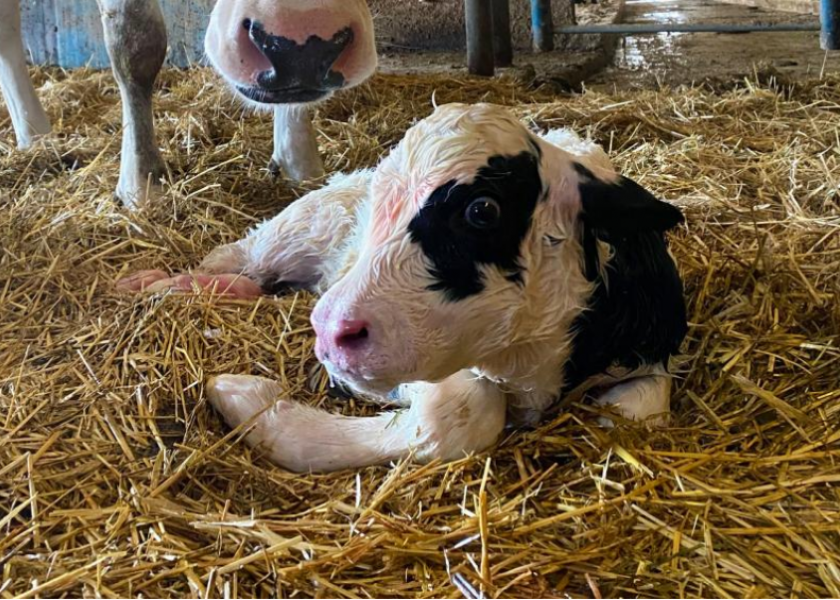Foolproof Colostrum Protocols Makes all the Difference

You don’t get a “re-do” when it comes to most aspects of dairying, according to Greta Halahan, herd manager at Singing Brook Farms, Imler, Pa.
That’s why Halahan believes so strongly in proactive animal care for her family’s 300-cow registered Holstein herd. And when it comes to calves, that all starts with colostrum.
“We made some major changes two years ago in our calf program,” Halahan shared on a recent “Cow-side Conversations” podcast episode from Pennsylvania’s Center for Dairy Excellence. “We worked very, very hard at improving our colostrum management.”
Through much trial and error, she and the farm’s dedicated calf manager, Virginia Deffibaugh, eventually arrived at the protocol that is in place today:
- Fresh cows are milked as quickly as possible after calving.
- Milkers immediately store harvested colostrum in a refrigerator.
- Within hours, Deffibaugh tests each batch of colostrum with a Brix refractometer, and grades it as “bull” (21-23) or “heifer” (24+) colostrum.
- Colostrum is frozen in 4-quart doses using Perfect Udder bags.
- When a calf is born, a staff member on duty thaws a bag of colostrum for the appropriate calf gender.
- After about 45 minutes of thawing, the colostrum is fed to the newborn using a tube feeder directly from the bag.
“By the time the cow has the calf licked off, the calf can be fed and then the cow can go in to be milked,” shared Diffebaugh.
While the process sounds simple, Halahan said it took a lot of thought and deliberation to achieve.
“A challenge that’s common for herds our size is that we don’t have someone who’s in charge of the maternity pen fulltime,” she shared. “When we were going through our colostrum protocols, it became clear that in order for our desired delivery to happen the same way every single time, there needed to be a process that was timely, simple, and no one ever has to make a decision.”
With the current system, the only decision that has to be made is, “do I need a bag for a bull or a heifer.”
To encourage staff on duty to follow the protocol, workers are provided a financial incentive based on serum IgG levels when calves are a few days old. Deffibaugh draws blood at 2-3 days of age, and evaluates serum IgG on-farm using a Brix refractometer and grading scale. “The vast majority of them test in the ‘excellent’ range because they’re getting the colostrum,” she said.
Navel dipping is another “must” at Singing Brook Farms. Their navel-care protocol prescribes that every calf’s navel is dipped four times between birth and when it is settled into its pen in their calf barn.
A big-picture thinker, Halahan declared that intensive preweaned calf management may seem expensive, but it’s actually the most affordable time to raise dairy animals right. “That surprises a lot of people because on paper, up until weaning looks like the most expensive time to raise a replacement heifer,” she said. “But it’s not, because if you make a mistake during that time, no matter how much money you pour into her later, you will never fix it.”
As for advice to fellow producers, Halahan stated, “You have to perfect your colostrum. Spend as much time as you need in perfecting a system where you can deliver a good quantity of high-quality colostrum in a very timely manner, very simply.
“If you don’t get colostrum and navels managed correctly at birth, it doesn't really matter what else you do.”







